Serbian-American inventor, discoverer, electrical engineer, mechanical engineer, theoretical and experimental physicist, futurist and humanitarian.
Don't wanna be here? Send us removal request.
Text
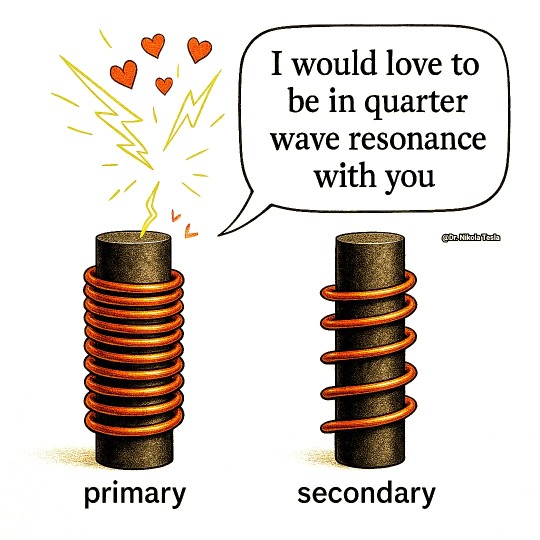
Now they're a couple 😍🥰😍🤪😜🤓
#nikola tesla#science#history#jokes#quarter-wave resonance#primary secondary coils#tuned#love#nerd jokes
31 notes
·
View notes
Text

#nikola tesla#monkey business#science#history#wireless#remote control#drones#technology#ahead of his time
100 notes
·
View notes
Text
Tesla’s Wardenclyffe Tower: Built on Sound Math, Undone by Cost and Misunderstanding

Let’s set the record straight—Nikola Tesla’s Wardenclyffe Tower was a high-voltage experimental transmission system grounded in quarter-wave resonance and electrostatic conduction—not Hertzian radiation. And the math behind it? It was solid—just often misunderstood by people applying the wrong physics.
In May 1901, Tesla calculated that to set the Earth into electrical resonance, he needed a quarter-wavelength system with a total conductor length of about 225,000 cm, or 738 feet.
So Tesla’s tower design had to evolve during construction. In a letter dated September 13, 1901, to architect Stanford White, Tesla wrote: “We cannot build that tower as outlined.” He scaled the visible height down to 200 feet. The final structure—based on photographic evidence and Tesla’s own testimony—stood at approximately 187 feet above ground. To meet the required electrical length, Tesla engineered a system that combined spiral coil geometry, an elevated terminal, a 120-foot vertical shaft extending underground, and radial pipes buried outward for approximately 300 feet. This subterranean network, together with the 187-foot tower and carefully tuned inductance, formed a continuous resonant conductor that matched Tesla’s target of 738 feet. He described this strategy in his 1897 patent (No. 593,138) and expanded on it in his 1900 and 1914 patents, showing how to simulate a longer conductor using high-frequency, resonant components. Even with a reduced visible height, Tesla’s system achieved quarter-wave resonance by completing the rest underground—proving that the tower’s electrical length, not its physical height, was what really mattered.
Tesla calculated his voltages to be around 10 million statvolts (roughly 3.3 billion volts in modern SI), so he had to consider corona discharge and dielectric breakdown. That’s why the terminal was designed with large, smooth spherical surfaces—to minimize electric surface density and reduce energy loss. This was no afterthought; it’s a core feature of his 1914 patent and clearly illustrated in his design sketches.
Now, about that ±16 volt swing across the Earth—what was Tesla talking about?
He modeled the Earth as a conductive sphere with a known electrostatic capacity. Using the relation:
ε × P = C × p
Where:
ε is the terminal’s capacitance (estimated at 1,000 cm)
P is the applied voltage (10⁷ statvolts)
C is the Earth’s capacitance, which Tesla estimated at 5.724 × 10⁸ cm (based on the Earth’s size)
p is the resulting voltage swing across the Earth
Plugging in the numbers gives p ≈ 17.5 volts, which Tesla rounded to ±16 volts. That’s a theoretical 32-volt peak-to-peak swing globally—not a trivial claim, but one rooted in his framework.
Modern recalculations, based on updated geophysical models, suggest a smaller swing—closer to ±7 volts—using a revised Earth capacitance of about 7.1 × 10⁸ cm. But that’s not a knock on Tesla’s math. His original ±16V estimate was fully consistent with the cgs system and the best data available in 1901, where the Earth was treated as a uniformly conductive sphere.
The difference between 7 and 16 volts isn’t about wrong numbers—it’s about evolving assumptions. Tesla wrote the equation. Others just adjusted the inputs. His premise—that the Earth could be set into controlled electrical resonance—still stands. Even if the voltage swing changes. The vision didn’t.
Wouldn't that ±16V swing affect nature or people? Not directly. It wasn’t a shock or discharge—it was a global oscillation in Earth’s electric potential, spread evenly across vast distances. The voltage gradient would be tiny at any given point—far less than what’s generated by everyday static electricity. Unless something was specifically tuned to resonate with Tesla’s system, the swing had no noticeable effect on people, animals, or the environment. It was a theoretical signature of resonance, not a hazard. While some early experiments in Colorado Springs did produce disruptive effects—like sparks from metal objects or spooked horses—those involved untuned, high-voltage discharges during Tesla’s exploratory phase. Wardenclyffe, by contrast, was a refined and carefully grounded system, engineered specifically to minimize leakage, discharge, and unintended effects.
And Tesla wasn’t trying to blast raw power through the ground. He described the system as one that would “ring the Earth like a bell,” using sharp, high-voltage impulses at a resonant frequency to create standing waves. As he put it:
“The secondary circuit increases the amplitude only... the actual power is only that supplied by the primary.” —Tesla, Oct. 15, 1901
Receivers, tuned to the same frequency, could tap into the Earth’s oscillating potential—not by intercepting radiated energy, but by coupling to the Earth’s own motion. That ±16V swing wasn’t a bug—it was the signature of resonance. Tesla’s transmitter generated it by pumping high-frequency, high-voltage impulses into the Earth, causing the surface potential to oscillate globally. That swing wasn’t the energy itself—it acted like a resonant “carrier.” Once the Earth was ringing at the right frequency, Tesla could send sharp impulses through it almost instantly, and tuned receivers could extract energy.
So—was it feasible?
According to Tesla’s own patents and 1916 legal testimony, yes. He accounted for insulation, voltage gradients, tuning, and corona losses. His design didn’t rely on brute force, but on resonant rise and impulse excitation. Tesla even addressed concerns over losses in the Earth—his system treated the planet not as a passive resistor but as an active component of the circuit, capable of sustaining standing waves.
Wardenclyffe wasn’t a failure of science. It was a casualty of cost, politics, and misunderstanding. Tesla’s system wasn’t just about wireless power—it was about turning the entire planet into a resonant electrical system. His use of electrostatics, high-frequency resonance, and spherical terminals was decades ahead of its time—and still worth studying today.
“The present is theirs; the future, for which I really worked, is mine.” —Nikola Tesla
#nikola tesla#science#history#quotes#electricity#wireless#technology#mathematics#math#engineering#power#Wardenclyffe#ahead of his time#ahead of our time
85 notes
·
View notes
Text
🚢 Tesla's Remote Control Patent: The Birth of Modern Automation 🚢

On November 8, 1898, Nikola Tesla was granted U.S. Patent No. 613,809 for his "Method of and Apparatus for Controlling Mechanism of Moving Vessels or Vehicles." This invention wasn’t just the first practical remote control—it marked a revolutionary step toward the development of wireless communication and automation.
🔧 How Tesla’s System Worked 🔧
Tesla's system worked much like how we control drones today—only over a century ago!
1️⃣ Transmitter: Tesla used radio waves to send wireless commands to the vessel.
2️⃣ Receiver: The vessel had a sensitive device that decoded the radio signals into specific actions, such as steering or powering motors.
3️⃣ Control Circuits: Tesla designed a series of circuits that ensured each command executed reliably, preventing errors and interference.

⚙️ Key Features ⚙️
💡 Command Logic: Tesla's circuits functioned like a primitive decision-making system, linking specific signals to specific actions—a conceptual precursor to today’s logic gates.
🔋 Multi-Channel Design: Each circuit operated on a unique frequency, akin to modern multi-device networks, ensuring precise control without interference.
🛡️ Safety First: Tesla implemented mechanisms to prevent accidental or incorrect activations, prioritizing reliability.

🌍 Applications Then and Now 🌍
Tesla saw the potential for:
✔️ Military Use: Guiding unmanned ships or torpedoes.
✔️ Disaster Response: Sending unmanned vessels into dangerous areas.
✔️ Remote Automation: Introducing wireless precision to various industries.
Today, Tesla's vision echoes in:
🚁 Drones: Controlled remotely through radio signals.
🤖 Robots: Autonomous machines performing tasks with precision.
🏠 Smart Homes: Devices responding to commands over Wi-Fi.
🏭 Automated Factories: Machines operating through programmable controls Tesla helped inspire.
🌟 Why Tesla’s Invention Matters 🌟
Tesla didn’t just create a remote control—he pioneered a framework for wireless systems that continues to shape modern technology. What are your thoughts on Tesla's advancement in wireless technology?
72 notes
·
View notes
Text
How Tesla’s 1934 Roast Looped Back to Donald Trump’s Uncle

Time travel to 1934 when Tesla dropped the most technical roast in science history! ⚡️🔥
The 1930s were a wild time for physics—scientists were just starting to crack open atoms, and everyone was hyped about particle acceleration. Enter MIT professor Van de Graaff, who unveils this massive static electricity generator housed in an airplane hangar. And it was impressive—a breakthrough in creating high-voltage environments for controlled research! 🏗️


But Tesla, the high-voltage GOAT since the 1890s, saw the numbers and was like, “Hold up...” 🤔
He broke it down (remember, this is the guy who gave us AC power):
The generator produced a CRAZY high voltage (10 million volts!) but barely any current (0.00022 amperes).
Imagine a super-skinny water pipe with extreme pressure vs. Tesla’s previous systems, which were more like Niagara Falls.
Only 23% efficient—a major issue for power generation.
The machine was producing its own ozone, which was deteriorating its belts. ☠️
Tesla had already pushed 18 million volts and 1,100 amperes through the air back in 1899, so he wasn’t easily impressed. He published a full analysis in Scientific American, saying, “Most people, and not a few electricians, will think that very long and noisy sparks are indicative of great energy, which is far from being the case.” 📝

Here’s the science tea ☕: While Van de Graaff’s machine was revolutionary for particle experiments, Tesla calculated that 99.33% of its input energy was lost during charging. For particle acceleration, it only hit 0.122 times the speed of light. But here’s the kicker—Van de Graaff’s machine wasn’t built for power plants; it became crucial for nuclear research and is still used in labs today! 🔬
Now, the plot twist: former president Donald Trump’s uncle, Dr. John Trump, was working with Van de Graaff at MIT during all this. Imagine getting a detailed critique from THE Nikola Tesla about your project and he's just dunking on you! 😅
Tesla wasn’t just throwing shade, though—when they improved the machine to 20 kilowatts, he acknowledged the progress with a galaxy-brain analogy: “A little water pumped through some joint in a big low-pressure main is of no consequence, but in a pump designed for an extremely high pressure and very small delivery it is all-important.” Different tools for different jobs! 🛠️
And here’s the full-circle moment: When Tesla passed in 1943, the FBI called Dr. John Trump to review his papers. Seems like a perfect time to restore your reputation and get back at Tesla. Trump said that Tesla's work, while innovative and intriguing, lacked concrete, practical applications and was largely speculative. He concluded that his papers did not contain any groundbreaking discoveries or revolutionary technologies. Sure, buddy! 😉
What do you think? Was Tesla too harsh on Van de Graaff, or was he spot-on?
58 notes
·
View notes
Text
The Lauffen-Frankfurt Experiment of 1891: A Landmark in Electrical Engineering

In 1891, an experiment in Germany transformed the future of electricity. The Lauffen-Frankfurt experiment marked the world's first successful long-distance transmission of three-phase electric power. Stretching approximately 175 kilometers (or 109 miles) from Lauffen am Neckar to Frankfurt am Main, it was a highlight of the International Electrotechnical Exhibition. Key figures included Oskar von Miller, the exhibition's chief organizer; Mikhail Dolivo-Dobrovolsky, who designed the three-phase generators; and Charles Eugene Lancelot Brown, an engineer from Switzerland's Maschinenfabrik Oerlikon, which supplied much of the equipment.

So, what made this experiment groundbreaking? They set up a three-phase AC system powered by a robust 300-horsepower generator, stepping up the voltage from 55 volts to an impressive 8,500 volts for efficient long-distance transmission. This setup, featuring three copper wires, successfully delivered enough power to run a 100-horsepower motor and illuminate 1,000 incandescent lamps at the exhibition.
What is three-phase? Think of it like a three-lane highway. With just one lane (single-phase), you can only have one car (or current) at a time, which leads to traffic jams. But with three lanes, multiple cars can move smoothly side by side, ensuring a steady flow. This means electricity can be delivered more efficiently and with less flicker, making it ideal for powering everything from lights to heavy machinery. While it might seem logical to add more phases for even better efficiency, three-phase systems are often the sweet spot. They provide balanced and constant power delivery, making them highly efficient for most applications. Adding more phases increases complexity without significant efficiency gains—like a six-phase system that might reduce ripple but complicates design, equipment, and maintenance.
The significance? This experiment demonstrated that electrical power could be transmitted over long distances with much less energy loss than DC systems. It achieved an impressive 75% efficiency, showcased the advantages of a three-phase system—like smoother power delivery—and highlighted the importance of voltage transformations for effective transmission. Essentially, they figured out how to make electricity travel like a well-coordinated relay race, where each runner (or phase) keeps the momentum going.

After the experiment, discussions arose about who truly invented the three-phase system. Charles Brown, a key figure in the German experiment, stepped up to give credit where it was due. In a letter published in The Electrical Review on February 12, 1892, he acknowledged the significance of the three-phase system while emphasizing that the main goal was to prove the feasibility of safely transmitting high-tension currents over long distances. He noted that although the three-phase current added complexity, its benefits for powering multiple motors simultaneously were worthwhile. Most importantly, he stated, “The three-phase current as applied at Frankfurt was due to the labors of Mr. Tesla and will be found clearly specified in his patents.”
Brown specifically referenced Tesla's patents filed on October 12, 1887: Patent No. 381,968 for an "Electromagnetic Motor" and Patent No. 382,280 for "Electrical Transmission of Power," which detailed a three-phase power system. These patents were foundational to the technology used in the Lauffen-Frankfurt experiment.
Brown’s acknowledgment highlights Tesla’s innovative spirit, which transcended borders and spurred advancements in Europe. His patents laid the groundwork for the three-phase current used in this experiment.
Tesla's patents weren’t mere formalities; they were foundational blueprints for modern electrical systems, including designs for polyphase AC systems that predated the Lauffen-Frankfurt experiment by several years. Brown's emphasis on the significance of Tesla's patents for the three-phase current demonstrated that many who discredit Tesla, even in today's debates, overlook their importance. This highlights Tesla's crucial role in developing the technology that both the German experiment and today’s innovations depend on.
In short, the Lauffen-Frankfurt experiment marked a pivotal moment in electrical engineering, proving the viability of long-distance AC power transmission and laying the foundation for today’s electrical grid. While it showcased German ingenuity, it also highlighted the collaborative nature of scientific progress, with Tesla's earlier contributions illuminating the path forward. The interplay between his theoretical innovations and the practical applications of this experiment illustrates how technological progress often builds on the brilliant ideas of others.
47 notes
·
View notes
Text
The Burden of Genius: Tesla’s Battles with Memory and Perception
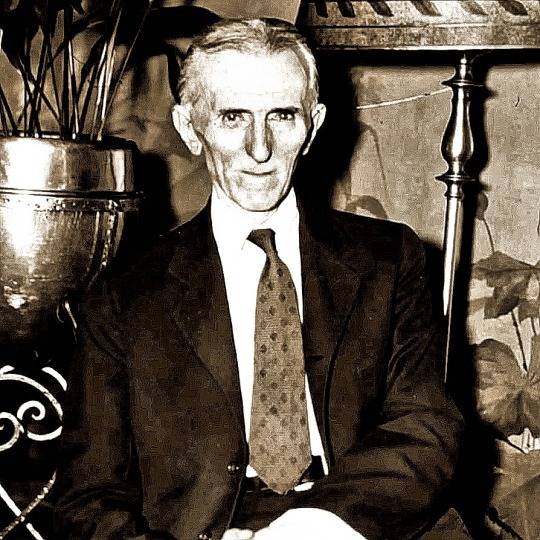
Nikola Tesla was a towering genius whose remarkable intellect often intersected with profound psychological challenges. His extraordinary mental abilities created a unique interplay between reality and imagination, which evolved significantly as he aged.
Tesla’s eidetic memory was both a remarkable gift and a source of distress. In his autobiography, he explained that during his youth, his vivid memories often seemed to overlap with his physical vision and reality, creating intense anxiety. For instance, recollections of his brother’s funeral would vividly reappear before his eyes, causing him significant distress. Tesla described these experiences, noting that his sisters frequently had to help him distinguish between reality and the projections from his mind.
Over time, Tesla mastered his memory, using it to perfect his inventions mentally before physically constructing them. This mental rehearsal allowed him to refine his designs thoroughly, ensuring that when built, they were as flawless as he had envisioned. This innovative approach was a cornerstone of his engineering process.
There’s a story about Tesla where his cleaning lady would find him sitting in a chair in the middle of his room, seemingly asleep. In reality, he was deep in thought, mentally exploring complex ideas, solving problems, and even working on his inventions as if he were in his laboratory. So immersed was he in his mental work that he could visualize wear on his apparatuses—all within his mind. Tesla would enter a trance-like state, appearing physically at rest while his mind was intensely focused. He believed these periods of mental immersion were crucial for his creativity and problem-solving. While others might think he was napping, his mind was actively refining his inventions and theories.
However, in his later years, the line between Tesla’s imagination and reality became increasingly blurred. His intense focus and stress began to distort his sense of what was real. In a deeply personal 1934 letter, Tesla recounted a profound and emotional experience involving his mother. He described his experience as being in New York in the early 1890s, and as he said, “I experienced an exquisitely painful longing for something undefinable” and was driven by a desire to see his mother, which was intensified by his inability to clearly recall her features. After rushing to her bedside, he saw her alive one last time. He then went to another building to rest and thought that if she died, he would feel a disturbance in the ether letting him know so. Sure enough, he had a vivid vision of her and was later given the news that she had passed. Out of nowhere, he realized with shock that he was back in New York and his mother had died years earlier. Tesla reflected, “My sufferings had been real though the events were but imaginary reflections of previous occurrences,” attributing the experience to a temporary “numbing” of his brain’s faculties from intense concentration. This incident highlights how deep focus can distort one’s grasp of reality.
By this time, Tesla was in his late 70s, and his mental state showed signs of decline. In John O'Neill’s biography, there is a poignant story about how Tesla believed Mark Twain was still alive and even wanted to send him money, only to be informed by his assistant that Twain had been deceased for 25 years. Tesla was adamant that he had met Twain just the night before. This anecdote underscores the growing blur between reality and imagination in Tesla's later years. Despite this, interviewers still described him as possessing grace and articulating his thoughts with both wit and intelligence.
His confusion over Mark Twain’s death and his intense, often troubling experiences reflect the toll that age and stress had taken on his mind. Tesla’s story reveals a man who grappled with the boundaries of his remarkable intellect and the increasingly blurred line between imagination and reality.
Tesla’s experiences remind us that even the greatest minds are not immune to the complexities of the human psyche. His life offers valuable insights into the delicate balance between genius and mental health, illustrating how the same qualities that fueled his innovation also led to profound personal challenges.
71 notes
·
View notes
Text
Tesla’s Genius: Direct Current Without a Commutator!
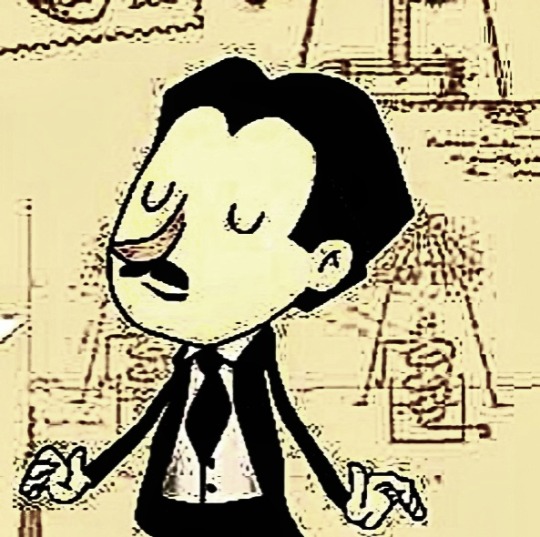
In 1888, Tesla made waves by patenting his alternating current (AC) system, which proved far superior to Thomas Edison’s direct current (DC) for long-distance power transmission. The real kicker? He did it without a commutator. This clunky mechanical device was used to reverse the current direction to make DC flow in one direction, but it was notoriously unreliable, prone to wear, and inefficient. Tesla sidestepped this by using high-frequency AC and a rotating magnetic field to generate a more reliable current without the mechanical hassle. After revolutionizing AC with his commutator-free approach, Nikola Tesla wasn’t ready to rest on his laurels. He turned his attention to a new challenge that many physicists of his day thought was impossible: creating direct current (DC) without using a commutator. As always, Tesla wasn’t concerned with traditional boundaries; he was determined to push the limits of what was thought possible.
Tesla’s Ingenious Method
In 1889, Tesla took things even further with a groundbreaking idea. He proposed a method to produce DC without using a commutator. He described how he “sifted” the alternating current into different branches of the circuit. Here’s how he did it:
1. Sifting the Current: Tesla used the concept of directing the AC waves so that the positive and negative halves of the wave were separated. He set up the circuit so that AC waves of one sign (positive or negative) would pass through one branch, while the waves of the opposite sign would go through another. This separation allowed him to create smooth, continuous DC from the AC input.
2. Electrical and Electromagnetic Methods: Tesla proposed two main methods for achieving this. One involved using electrical devices like batteries to create a counteracting electromotive force, which would oppose the AC waves and help separate them. The other method used electromagnetic fields to create active opposition within the circuit, guiding the AC waves into different branches.
3. Magnetic Method: Another method Tesla described used strong permanent magnets and soft iron or steel laminations. By carefully calculating the amount of magnetic metal, Tesla created a setup where the magnetic field interacted with the AC in such a way that allowed continuous currents to be extracted.
Historical Context
Here’s an important note: While Tesla did indeed demonstrate a method for converting AC to DC without a commutator, it’s crucial to understand the broader historical context. Rectification methods—both mechanical and electronic—developed independently over time and were not solely based on Tesla’s innovations. It wasn’t until more than a decade later that practical AC-to-DC conversion technologies, such as vacuum tubes and silicon diodes, became mainstream.
Tesla’s approach did, however, lay the groundwork for modern power electronics by eliminating the need for mechanical parts, making DC conversion more efficient and durable. The principles he introduced continue to influence technologies we use today, from phone chargers to large-scale industrial power systems.
So, the next time you plug in your phone or marvel at the sleek electronics in your home, remember that Tesla’s 1889 breakthrough was a significant step forward. It’s just another example of how Nikola Tesla was light-years ahead of his time!
44 notes
·
View notes
Text
A Night with Tesla: The Future of Electrical Resonance

(This narrative is a creative reimagining of a 1901 interview with Nikola Tesla, titled "Tesla's Twentieth-Century Views," originally penned by Frank L. Perry for the Western Electrician. Presented from a first-person perspective, this piece offers a fun and immersive experience while preserving Tesla's original words about resonance and the future of energy.)
Late one Friday evening in January of 1901, I found myself at the Waldorf-Astoria in New York, sitting down with the legendary inventor, Nikola Tesla. The setting was grand, but Tesla seemed entirely focused, undistracted by the opulence around him. I had been eager to ask him about his latest thoughts on the future of electrical energy, particularly the concept of resonance, or as Tesla often referred to it, “electrical tuning.”
With a mix of excitement and curiosity, I asked, “From your own investigations with high-frequency currents and the transmission of electrical energy, it seems that there’s a great future along these lines. Does the question of ‘electrical tuning’ become a most important one? Will this direct the progress of scientific discoveries in the next decade?”
Tesla leaned forward slightly, his eyes bright with conviction. “You have put a question,” he began, “which not only is of great importance in many arts of the present day, but also throughout the mechanism of the universe. The phenomena of sound and light afford striking examples. I believe that ultimately even nerve action will be proven to involve the principles of ‘sympathetic response.’” His thoughts were as bold as they were profound, suggesting that the very nature of life and nerve function operated on the same principles as electrical resonance.
He continued, “In my own experiments with electrical and mechanical vibrations, I’ve been impressed by the tremendous possibilities. With a small engine capable of pressing a piston back and forth with a force of just two pounds, I once set an entire block of modern buildings into such violent swaying that people rushed out terrified. And this was done through precise attunement.”
As he spoke, I found myself captivated by the simplicity of his explanation, despite the staggering implications. Tesla didn’t stop with mechanical resonance. He went on to explain his even more astonishing work in electrical vibration. “In electrical vibration,” he said, “I have frequently obtained results that were even more wonderful. The tuning of electric circuits is becoming increasingly important as the arts advance and methods refine. The layman can only have a vague idea of what can be accomplished in this line by those who possess the knowledge and skill.”
I asked him about this skill—how one could master such an art. “Knowledge of the principles is easy enough to acquire,” he admitted, “and one of the best sources of information on the subject comes from Prof. Pupin, whose work makes it accessible even to a beginner. But skill—now that takes patience and untiring dedication.”
The conversation turned to the challenges of refining electrical circuits for optimal resonance. Tesla explained, “Many experimenters don’t realize that an electrical system cannot vibrate freely through an imperfect contact or high resistance. It’s like trying to get a spring to vibrate while holding it firmly—it simply won’t happen.”
He paused for a moment, as though he was envisioning the future even as he spoke. “The transmission of electrical energy through the earth offers the greatest possibilities of development. The time is not far off when electrical oscillations will speed through the globe, each separate and distinct, fulfilling its mission. It’s a seemingly simple subject, but as you advance, it feels as if the wide ocean is opening up before your eyes.”
As we concluded, Tesla recalled an experiment from five years prior, where he had successfully “tuned” 150 circuits, calling each one in turn without disturbing the others. “At the time, I thought I had mastered the art,” he smiled, “but now I see that I was only just beginning to learn.”
Leaving that evening, I felt that I had been granted a rare glimpse into the mind of a true visionary, a man who saw the universe as a symphony of vibrations, with every element perfectly attuned. What Tesla envisioned wasn’t just a technological future—it was a harmonious one. And as we move further into the twentieth century, I can’t help but wonder how much of his grand vision we’ll soon witness.
#nikola tesla#science#history#interview#electricity#resonance#tuning#ahead of his time#ahead of our time
58 notes
·
View notes
Text
Reviving Tesla’s Dream: The Future of Wireless Power Transmission

“My project was retarded by the laws of nature. The world was not prepared for it. It was too far ahead of time. But the same laws will prevail in the end and make it a triumphal success.” – Nikola Tesla
In the early days of radio technology, there was a crucial decision point that split wireless technology into two distinct paths. One path, pursued by Marconi and others, focused on electromagnetic wave transmission. The other path, championed by Nikola Tesla, aimed to minimize electromagnetic waves and use the Earth itself for energy transmission. While the world predominantly embraced the former, Tesla’s innovative approach was largely forgotten. Let’s explore Tesla’s lost art.
Tesla's wireless power transmission system, often known as his "Magnifying Transmitter," was a pioneering approach to sending electrical energy over long distances. Unlike today’s wireless technologies, which rely on electromagnetic waves, Tesla's design aimed to transmit energy through the earth, which he believed was more efficient.

Tesla showcased his system’s potential during his 1899 experiments in Colorado Springs. He successfully transmitted energy through the ground, illuminating bulbs about a mile away from the transmitter. Tesla saw this as a matter of engineering: just as a machine that can throw a rock 5 feet can be engineered to throw it 1,000 feet, he believed his system could be adjusted to transmit power across any distance on Earth.
Modern wireless technologies, such as radio, Wi-Fi, and cellular networks, use electromagnetic waves that spread outward from a source. These waves lose strength according to the inverse square law, which means signal strength decreases with the square of the distance from the source. This energy loss is a significant limitation for long-distance communication and power transmission.
Tesla’s vision was quite different. He recognized that while electromagnetic waves were effective for communication, they were inefficient for transmitting large amounts of power. As he put it, “I only used low alternations, and I produced 90 percent in current energy and only 10 percent in electromagnetic waves, which are wasted.” Tesla aimed to minimize electromagnetic radiation, which he considered to be energy-draining. Instead, he focused on transmitting energy through the earth, which he believed was more efficient and recoverable.

Tesla's system utilized a large coil known as the "Magnifying Transmitter," which generated a high-voltage, low-frequency current. This design featured significant self-inductance and minimal capacitance, producing a strong resonant effect. By accumulating and directing massive amounts of energy with minimal losses, Tesla aimed for efficient power transmission. As he explained, “I accumulate in that circuit a tremendous energy... I prefer to reduce those waves in quantity and pass a current into the earth, because electromagnetic wave energy is not recoverable while the earth current is entirely recoverable, being the energy stored in an elastic system.”
The scientific principles of Tesla's system include:
1. Resonant Circuits: Tesla's system used resonant circuits, tuning the primary and secondary coils to the same frequency. This resonance allowed for efficient energy transfer between coils, amplifying energy while minimizing losses.
2. Self-Inductance: A key component of Tesla’s system was self-inductance. A large coil with high self-inductance generated a strong magnetic field essential for creating high-voltage, low-frequency current. Self-inductance helped store energy in the coil’s magnetic field, critical for high power levels.
3. Capacitance: Tesla’s design involved large capacitors to store electrical energy. Capacitance was kept small compared to self-inductance to achieve desired resonant effects. The capacitors would discharge rapidly, creating high-voltage pulses for transmission through the earth.
To construct a system similar to Tesla’s, he advised:
1. Low Frequency, High Voltage Design: Build a large Tesla coil to generate high voltages at low frequencies. Ensure the design minimizes electromagnetic radiation and focuses on efficient energy transfer into the ground.
2. Loose Coupling for Resonance: Use loose coupling between the primary and secondary coils to achieve significant resonant rise. The coils should be inductively linked but not too close to avoid direct energy transfer.
3. Earth Connection: Establish a deep, effective ground connection to allow the transmitter to send electrical currents into the earth, utilizing its natural conductive properties.
4. Minimizing Radiation: Design the system to suppress electromagnetic radiation, aiming to retain energy within the circuit and direct it into the ground. Tune the system to maximize energy storage and transfer.
5. Energy Storage and Discharge: Incorporate large capacitors for storing and rapidly discharging energy to create high-voltage, low-frequency oscillations.

Tesla’s system faced significant challenges, including the need for large, expensive equipment. In 1914, he estimated the cost of his "Magnifying Transmitter" at $450,000—around $15 million today. These financial constraints prevented him from fully realizing his dream and unfortunately led to his public image as a mad scientist with unrealistic future visions. However, the potential applications of his system are vast, from global wireless power transmission to reducing infrastructure costs and powering remote areas. With ongoing advancements in technology, Tesla’s vision may be within reach.
Tesla’s system presents an alternative approach to wireless energy transmission, focusing on efficiency and long-distance power transfer over the broad dispersal of electromagnetic waves. While modern technologies have advanced in different ways, Tesla’s principles—especially his focus on resonant circuits and earth currents—provide valuable insights into alternative methods of energy transmission. Exploring these principles today could lead to innovative applications, such as more efficient long-distance power transmission or new energy transfer methods.
#nikola tesla#science#history#wireless#energy#power#technology#quotes#ahead of his time#ahead of our time
122 notes
·
View notes
Text
Tesla's Obsession With the Ancient Pyramids
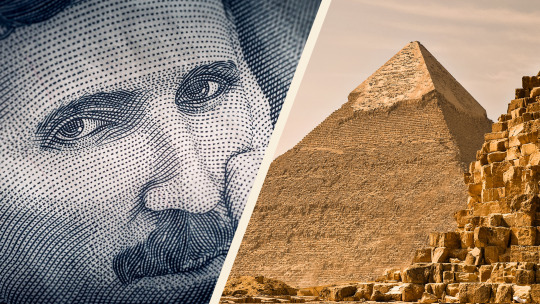
Nikola Tesla's fascination with the Egyptian pyramids stemmed from his belief that they held profound secrets of ancient technology and engineering. He was particularly intrigued by their precise construction and alignment with astronomical phenomena, such as the cardinal points and the movements of celestial bodies.
In 1904, Tesla met with British occultist Aleister Crowley in Cairo, Egypt, and aided Crowley in writing his book, The Book of the Law. According to Crowley's accounts, he and Tesla received the idea for his book through a series of transmissions from a spiritual entity known as Aiwass while staying in Cairo. This event marked a significant turning point in Crowley's life and his development as a prominent figure in occultism and esotericism.
Tesla's interpretation of the messages from Aiwass differed significantly from Crowley's. Tesla speculated that the Great Pyramid of Giza might have served as an enormous power plant or transmitter of energy, based on its unique geometric properties and the possibility of it containing hidden chambers or conduits. He proposed theories about energy, frequency, and vibration, suggesting that the pyramids could harness and transmit free energy through the Earth's crust.
In 1905, Tesla filed a patent in the U.S. titled “The Art of Transmitting Electrical Energy Through the Natural Medium,” in hopes of mimicking the engineering of the pyramids to provide the world with free energy.
While Tesla's ideas about the pyramids were unconventional and not supported by mainstream archaeology or Egyptology, they reflect his visionary approach to science and his willingness to explore unconventional theories. Despite lacking concrete evidence, his fascination with the pyramids demonstrates his belief in the interconnectedness of ancient wisdom and modern technology.
APRIL FOOLS!!! 🤣😂🤣
There is literally no evidence that suggests Nikola Tesla showed any interest in the Egyptian Pyramids. These conspiracies are derived from silly people using Tesla’s inventions to correlate and further promote their far-fetched, evidence-free theories that the Egyptians were visited by extraterrestrials.
Have a good day everyone! (((:
58 notes
·
View notes
Text
The Lifestyle of Nikola Tesla
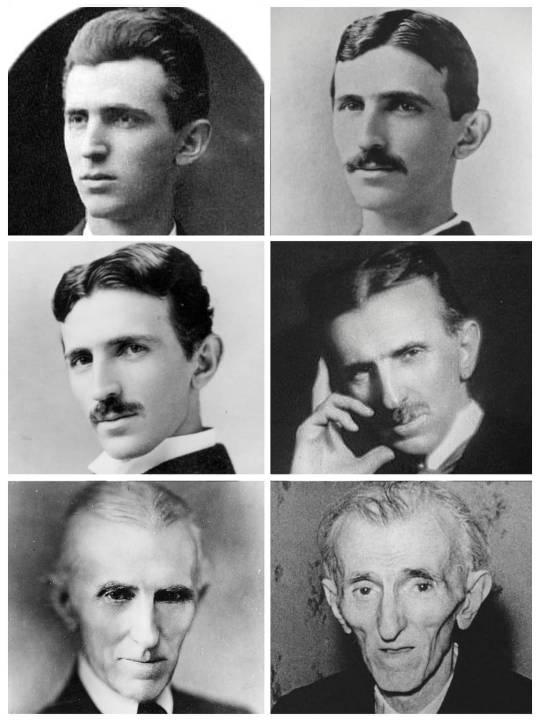
Nikola Tesla was a very tall and skinny man, standing over six feet and weighing around one hundred and forty pounds. He had light blue-gray eyes, which was considered odd because he was of Serbian descent who were typically known to have darker eyes. Tesla, probably joking, said to a reporter that his eyes used to be dark, but using his mind so much had made them many shades lighter. The inventor was known to be very elegant, stylish, meticulous in his grooming, clothing, and regimented in his daily activities.
Tesla never married and remained a celibate and a bachelor his entire life. Tesla was solely committed to the principles of science above all else, and for this reason, he denied the love and companionship of a female counterpart. He chose to lead a solitary life, hoping only that this sacrifice to work would make his name live on through many centuries still to come.
One of his few hobbies other than work was feeding birds. Tesla’s respect for birds began when he was a child growing up in the Austro-Hungarian Empire. He and his local friends made a sport out of catching live birds, and when Tesla himself caught a couple of keepers, he and his friend found themselves getting attacked by a murder of crows. The revolt forced the boys to release the birds and take cover. In America, he made it a specialty of his to treat sick pigeons, which seems odd because he was quite the germaphobe. He would feed them every day on his daily walks and would also take in wounded pigeons and nurse them back to health at his hotel in New York. He seemed to have had a better connection with birds than with most people. In 1917, he was awarded the Edison Medal, and upon receiving the award, the inventor could not be found. He was later found feeding pigeons near a local library and was persuaded back to the ceremony to give his speech.
Tesla suffered from an obsessive compulsive disorder, and because of this, he developed some very strange idiosyncrasies and phobias, such as having a strong dislike against earrings, pearls, peaches, and touching other people's hair. He counted the steps in his walks and calculated the cubical contents of soup plates, coffee cups, and pieces of food. All repeated acts or operations he performed had to be divisible by three.
While living in New York, Tesla kept his laboratories absolutely clean and pure, refused to touch other people, would wear gloves while shaking hands, and insisted upon personally cleaning his own plates and silverware at restaurants with his requested 18 napkins. This cleanliness was all intentional because, as a child, he almost died from cholera, which raged in the region of his hometown Lika due to contaminated water. Many found Tesla’s actions strange, but to him, it was a very important measure to protect his health.
In another way to keep his body clean and pure, Tesla invented an electrical apparatus that could give the human body a dry bath by passing millions of volts of electricity through it (similar to his demonstrations in the early 1890s where he passed electricity through his own body). His oscillator was a small, drum-like object about two feet long by one foot wide and could apply half a million volts of electricity through his body. The large amount of electricity would affect the germs without destroying the cells of the tissues of the body. Though his oscillator seemed like a fountain of youth, Tesla maintained his conventional ideas of health. He bathed daily, believed in plenty of exercise, and would walk eight or ten miles every day. He said that he never would take a cab or other conveyance and relied on his leg power for transportation.
His diet was a crucial part of his daily routine to remain healthy and to prolong the length of his life. He was very fussy and particular about his food: he ate very little, but what he did eat had to be the very best. He wasn’t a complete vegetarian; he ate meat, just not very occasionally (perhaps once or twice a year). He did believe though that humankind should move towards a vegetarian diet, not just because eating meat the way we do is “barbarous,” as he said, but because he believed the vegetarian diet is more beneficial to the human body.
In his later years, he never smoked, drank tea, coffee, alcoholic beverages, or consumed any other stimulant. Since he saw life through the lens of his mechanistic theory of life, he took great care of his body as if it were a machine properly maintaining its best efficiency.
As for sleep, Tesla reported that he was a poor sleeper and had very unusual resting patterns. He claimed to only sleep a few hours each day and would oftentimes practice polyphasic sleep where he would take short naps for restoration instead of sleeping for a long period of time.
Unfortunately for Tesla and his clean and healthy lifestyle, in 1937, at the age of 81, he was hit by a taxicab during one of his regular walks. It is likely he was jaywalking because he admittedly was known to do so. He broke three ribs and seriously injured his back. Tesla would be bedridden for months while refusing to see a doctor, and on top of this would catch pneumonia, which would plague his health for the last 5 years of his life. I believe this accident and sickness would play a major role in the rapid decline of his health, both mentally and physically, and his goal of living past a century would never be realized.
Nikola Tesla had a unique and eccentric lifestyle and was known for his intense work habits, often spending long hours in his laboratory. So much so that his friends would seriously worry about his health. Financial difficulties were a recurring theme in his life, and he died in relative obscurity. Despite these challenges, Tesla's legacy is marked by his groundbreaking contributions to the field of electrical engineering.
247 notes
·
View notes
Text
X-Ray Image Taken By Nikola Tesla (1896)
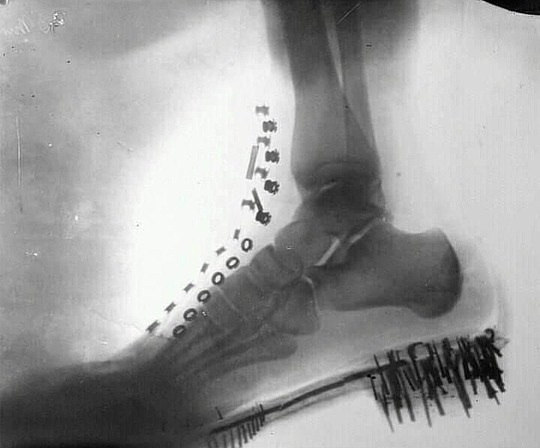
Though not widely known, Nikola Tesla spent a great deal of time intensively researching X-rays, publishing his results during the period between March 11, 1896 to August 11, 1897. He also gave a lecture on April 6, 1897 presenting designs of several different devices that could generate these powerful rays. During this lecture, he shared similar data and conclusions from his earlier experiments with Crookes tubes in 1894. Crookes tubes were invented by British scientist William Crookes in order to study electrical discharges in vacuum tubes. During Tesla’s experiments in 1894, he observed that some of the tubes that produced only feeble visible light had more effect on photographic plates than tubes which were brighter. Since it was obvious that there must be some kind of energy coming from the tubes with feeble light, and their properties were still unknown, Tesla used the term “radiant matter" to describe these radiations. With these tubes, Tesla produced some of the first X-ray imaging, which he called “shadowgraphs,” due to their dark nature, but still did not realize the importance of these radiations. To him, the photographs taken seemed to be spoiled due to unaccountable marks and defects. In March of 1895, a fire broke out in his laboratory, destroying practically all of his equipment and experimental data to date. It took several months before he could resume his work, and in the meantime, a German scientist named Wilhelm Röntgen made his X-ray discovery in the same year (December, 1895). Roentgen first detected the radiation by accident in his experiments where he was testing whether cathode rays emitted from Crookes tubes could pass through glass, and or other solid objects, but was astonished to find that the rays emitted would pass through thinner objects and leave shadows of the more solid objects behind (such as with skin and bones). When Tesla heard this news, it was immediately obvious to him what had been problematic in his laboratory work. Realizing and regretting that he had missed out on making a major scientific discovery, Tesla would say, “I realized that my guiding spirit had again prompted me and that I had failed to comprehend his mysterious signs.” He repeated Röntgen's experiments, and came to much better results than Röntgen and others since he had his newly developed Tesla Coil. With this apparatus, he immediately realized the importance of high voltages for producing powerful rays and suggested using his newly developed single-terminal tubes and connecting them to the secondary coil of the transformer. In 1896, Röntgen acknowledged Tesla’s discoveries and in a lecture before the Physical Medical Society in Wurzburg, Germany, discussed the advantage of using Tesla’s high-frequency transformer in generating X-rays. Tesla would also become one of the first scientists to point out the harms of these rays and developed safer ways to utilize them for medical use. Methods we still use today. On the other side of town, others like Thomas Edison thought these newly discovered rays could cure the blind. Many patients who were experimented upon starting showing terrible illnesses, one being his assistant who later had to have both arms amputated. Edison was quoted in an interview saying, “Don’t talk to me about X-rays…I am afraid of them.”
Nikola Tesla would later give all credit to Röntgen for the discovery, and throughout the next few years, produced some of the best X-ray imaging that even Röntgen praised. In a letter to Tesla, Röntgen wrote, “Dear Sir! You have surprised me tremendously with the beautiful photographs of wonderful discharges, and I tell you thank you very much for that. If only I knew how you make such things!”
#nikola tesla#science#history#x ray#X-rays#technology#invention#medical#electricity#quotes#ahead of his time#ahead of our time
170 notes
·
View notes
Text
Nikola Tesla on Human Energy

In an article written in 1900 titled “The Problem of Increasing Human Energy,” Nikola Tesla shares his ideas aimed at revolutionizing the way energy is generated, transmitted, and utilized, with the ultimate goal of enhancing human well-being and progress.
Tesla starts with his philosophical perspective on human life–what is it, and where is it going? He implies that human life is a movement, and since the existence of movement naturally implies a body which is being moved and a force which is moving it, then wherever there is life, there is a mass moved by a force. Since action and reaction are coexistent (Newton’s third law of motion), then human movement, along with all movement in the universe, is rhythmical. He explains how we are witness to this rhythm in the motion of the stars, the surging and ebbing of the oceans, the changing of seasons, and the infinitely varied phenomena of organic life. Tesla then identifies humanity as a unitary whole, and comes to the conclusion that the same general laws of movement that govern the whole physical universe must be applicable to all living things, including humankind, and we may understand this movement by using mechanical principles. Consequently, Tesla implies we may measure human energy using the formula for kinetic energy, E=MV²/2, which is one of the fundamental physics equations that describes a moving object's energy. E represents energy, M being human mass, and V a hypothetical velocity. Tesla goes on to consider humans analogous to machines and asks how do we increase the energy of this machine positively and decrease the negative forces decelerating it? In answering this question, Tesla suggests:
Promoting marriage
Having more children and raising them to a higher velocity, or enlightenment, than their parents
Attention to health
Improving quality of drinking water
Providing healthful food to those in need
Encouraging a vegetarian diet rather than a carnivorous one
Discouraging artificial food
Moderation of exercise between both mind and body
Discouraging bad habits with alcohol, tobacco, tea, coffee, and other stimulants
Discouraging gambling
Improving hygiene, education, and morals
Reducing ignorance, stupidity, imbecility, religious fanaticism, etc.
Improving the productivity of soil by electrical means
Increasing the workforce
Ending warfare by developing machines (remote controlled robots, drones, etc.) to fight battles leading to fewer human casualties
Encouraging peace by bringing humans in closer contact
Improving methods of manufacturing (i.e., coal, gas, iron, aluminum)
Withdrawing from traditional energy sources and tapping into renewable energy
Tesla shares his invention of a radio controlled boat and its possible use. He also shares his experiments involving burning of nitrogen in the atmosphere, wireless transmission of power, and more. He discusses his vision for harnessing natural forces to help increase the energy needs of humanity. He proposes a global system of wireless power transmission, using the earth as a conductor and waterfalls as a power source. He also explores the possibilities of interplanetary communication and ideas related to tapping into cosmic energy sources and utilizing them for the betterment of humankind.
Tesla finishes his article saying:
"I anticipate that many, unprepared for these results, which, through long familiarity, appear to me simple and obvious, will consider them still far from practical application. Such reserve, and even opposition, of some is as useful a quality and as necessary an element in human progress as the quick receptivity and enthusiasm of others. Thus, a mass which resists the force at first, once set in movement, adds to the energy. The scientific man does not aim at an immediate result. He does not expect that his advanced ideas will be readily taken up. His work is like that of the planter — for the future. His duty is to lay the foundation for those who are to come, and point the way. He lives and labors and hopes with the poet who says:
"Schaff’, das Tagwerk meiner Hände, Hohes Glück, dass ich’s vollende! Lass, o lass mich nicht ermatten! Nein, es sind nicht leere Träume: Jetzt nur Stangen, diese Bäume Geben einst noch Frucht und Schatten."
(Daily work — my hands’ employment, To complete is pure enjoyment! Let, oh, let me never falter! No! there is no empty dreaming: Lo! these trees, but bare poles seeming, Yet will yield both food and shelter!)
*Goethe’s “Hope." Translated by William Gibson, Com. U. S. N.*
#nikola tesla#science#history#quotes#energy#wireless#power#humanity#humankind#philosophy#ahead of his time#ahead of our time
161 notes
·
View notes
Text
A Letter From Mark Twain to Nikola Tesla
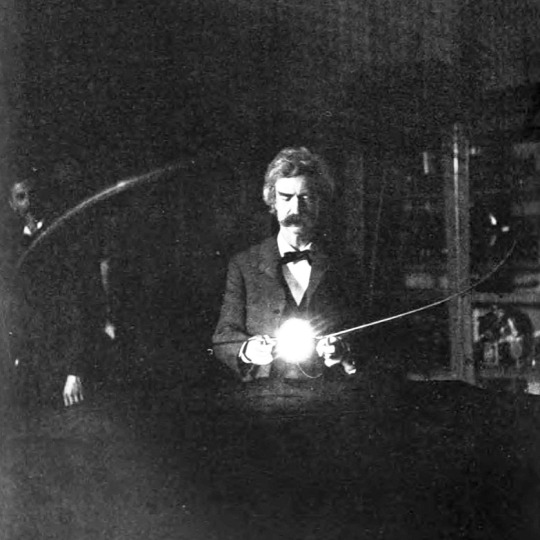
On November 8, 1898, Nikola Tesla made a public announcement of his wirelessly-controlled boat the same day his U.S. Patent was granted to him. Wireless was still very much in its infancy, so the announcement was beyond the comprehension of the layperson. Tesla described his invention as having many uses, including wirelessly controlled boats, vehicles, or aerial devices of any suitable kind to be used as life dispatch, or for carrying letters, packages, or other provisions. It could also make it easier to establish communication with inaccessible regions and explore such regions in the same, and for many other scientific, engineering, or commercial purposes. But the greatest value of his invention was its possible use in warfare for, for his own reason, it had certain and unlimited destructiveness. He could load a boat with explosives and direct it toward any enemy, and by the sheer destructive effect, he would force the opposition in retreat.
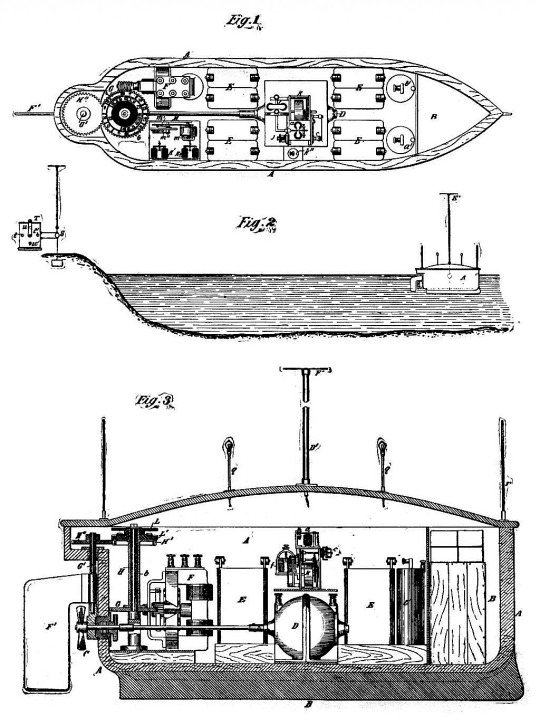
On November 17, 1898, Samuel Clemens, aka Mark Twain, wrote a letter to Tesla regarding his wireless-controlled boat:
Dear Mr. Tesla
Have you Austrian & English patents on that destructive terror which you have been inventing?—& if so, won't you set a price upon them & commission me to sell them? I know cabinet ministers of both countries—& of Germany, too; likewise William II.
I shall be in Europe a year, yet.
Here in the hotel the other night when some interested men were discussing means to persuade the nations to join with the Czar & disarm, I advised them to seek something more sure than disarmament by perishable paper invite the great inventors to contrive something against which fleets and armies would be helpless & thus make war thenceforth impossible. I did not suspect that you were already attending to that, & getting ready to introduce into the earth permanent peace & disarmament in a practical & mandatory way.
I know you are a very busy man, but will you steal time to drop me a line?
Sincerely yours,
Mark Twain
#nikola tesla#science#history#remote control#radio#technology#mark twain#Samuel Clemens#quotes#ahead of his time#ahead of our time
151 notes
·
View notes
Text
The Anniversary of Nikola Tesla's Death
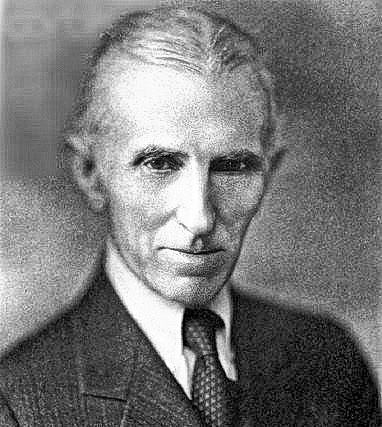
January 7th marks the anniversary of Nikola Tesla's death, who passed away on this date 81 years ago in 1943. He died in poverty, but his achievements, along with his hope and dreams for the future, place him among the greatest scientific icons in human history.
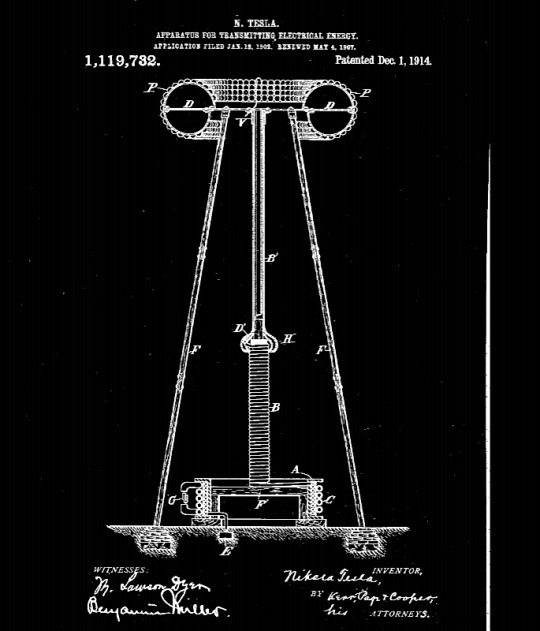
January 7th in the Orthodox Christian Christmas calendar also marks the date when the birth of Jesus Christ is celebrated. It aligns with the Julian calendar, and for Orthodox Christians, this date is significant as the day to commemorate the nativity of Jesus, similar to December 25th in the Gregorian calendar used by Western Christianity. The choice of the date is rooted in historical and calendar differences between the Eastern and Western Christian traditions.
Coincidentally, this date also marks Nikola Tesla's last diary entry in his "Colorado Springs Notes." Apart from the usual description of photographs, Tesla writes about experiments he intends to carry out on his return from Colorado Springs. He qualifies the experiments to date as satisfactory, considering that his aim in Colorado was "to perfect the apparatus and make general observations." The apparatus, which he was then envisaging for future experiments, was to be an improved oscillator which would enable better results than any he had so far obtained. This improved oscillator would become his Magnifying Transmitter. It was meant to transmit signals via telephony, and most importantly power to any part on the globe, regardless of distance, providing the world with cheap and clean energy.
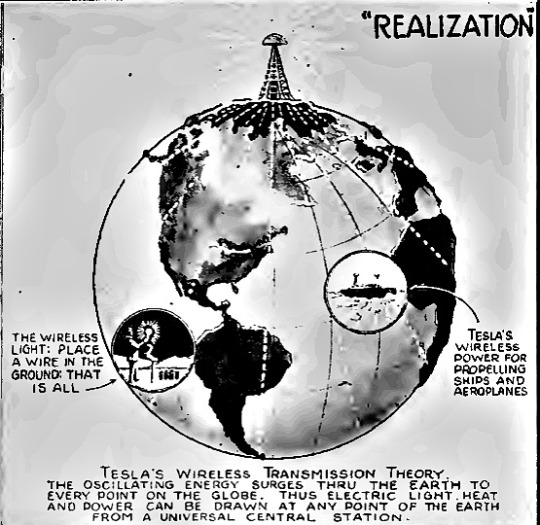
On January 7th, 1905, Nikola tesla would also publish an article titled, “The Transmission of Electrical Energy Without Wires As a Means for Furthering Peace.“ The article discusses Tesla's idea of transmitting electrical energy wirelessly as a means to advance global peace. Tesla believed that this technology could enhance accessibility to resources, fostering cooperation and harmony among nations. His vision was centered on using scientific advancements for the betterment of humanity and international relations.
Even though it has been 81 years since his death, the legacy of Nikola Tesla continues to live on in his achievements which are almost beyond calculation, and are a major integral part of the entire world as we know it. Today, we honor this great genius. We celebrate his extraordinary life, his triumph which is our triumph, a victory to everyone on earth. We celebrate his many contributions to our livelihood, and his visions of the future that we have yet to realize.
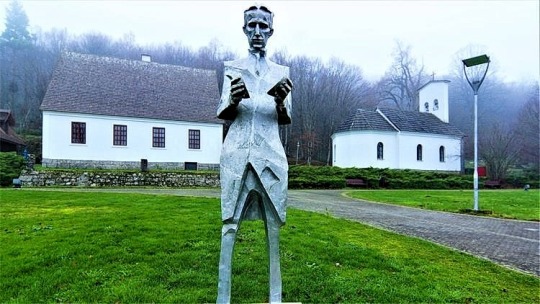
“Let the future tell the truth and evaluate each one according to his work and accomplishments. The present is theirs; the future, for which I really worked, is mine.”
–Nikola Tesla
#nikola tesla#science#history#anniversary#death#january 7#electricity#wireless#energy#power#technology#Christ#Christmas#ahead of his time#ahead of our time#quotes
200 notes
·
View notes
Text
The Evolution of the Tesla Coil

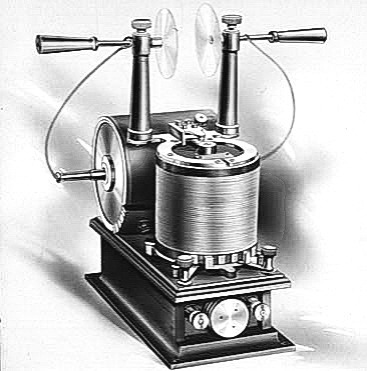
Nikola Tesla invented the Tesla coil as part of his exploration into lighting, wireless power transmission, and radiofrequency experiments. He developed the coil to produce high-voltage, low current, high-frequency electricity. The Tesla coil consists of primary and secondary coils that are inductively coupled, and the circuit is designed to resonate at a specific frequency. This resonance enhances the efficiency of energy transfer between the coils, enabling the generation of high-voltage, high-frequency alternating current.
His first Tesla coil was a bipolar coil created around 1891, and was demonstrated before scientific institutes from 1891-1893. His patents reveal that they were essentially intended for light production using both high frequency and high voltage at the same time. He also mentions in his patents how he discovered that a single wire could be used to light a light bulb. Generally, light bulbs require two wires to operate – one for the positive (live or hot) and one for the negative (neutral). He also discarded wires completely lighting bulbs wirelessly. Tesla improved upon the bipolar coil over many years using them for gas engine ignition, wireless, ozone production, and to create undamped waves.
In 1893, Tesla developed the bifilar spiral coil, which is a type of coil wound with two parallel wires, known as bifilar winding. The wires are wound side by side in a spiral pattern, maintaining close proximity throughout the coil. It was built in an attempt to avoid the employment of condensers, which are expensive and difficult to maintain. The coils themselves were meant to accomplish the same ultimate object as the condensers.

In 1894, Tesla evolved his coil into a conical coil. A conical coil refers to a coil or winding in the shape of a cone. These coils were sometimes employed in his wireless power transmission experiments and other electrical investigations. The shape of the coil can influence its inductance, capacitance, and resonance properties, impacting its performance in different applications. This coil allowed Tesla to reach tensions of 1 million volts.
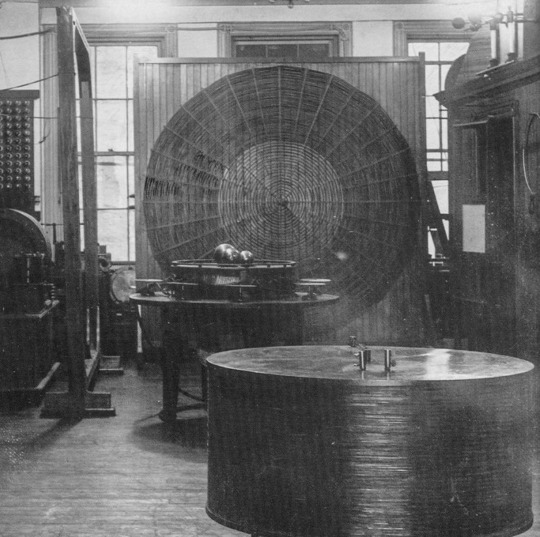
In 1897, Tesla developed the flat spiral coil, similar to his bifilar coil. This type of coil forms a flat, spiral pattern. The specific shape and dimensions of the coil can influence its inductance and other electrical properties. The main reason Tesla started using flat spiral coils was because they were relatively safe, since the highest potential terminal is at the center, and also because they better suppressed the sparks, which were essentially losses in the circuit, allowing him to achieve higher voltages:
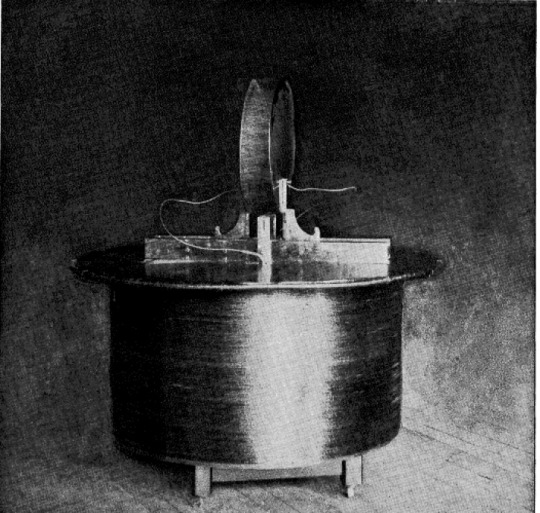
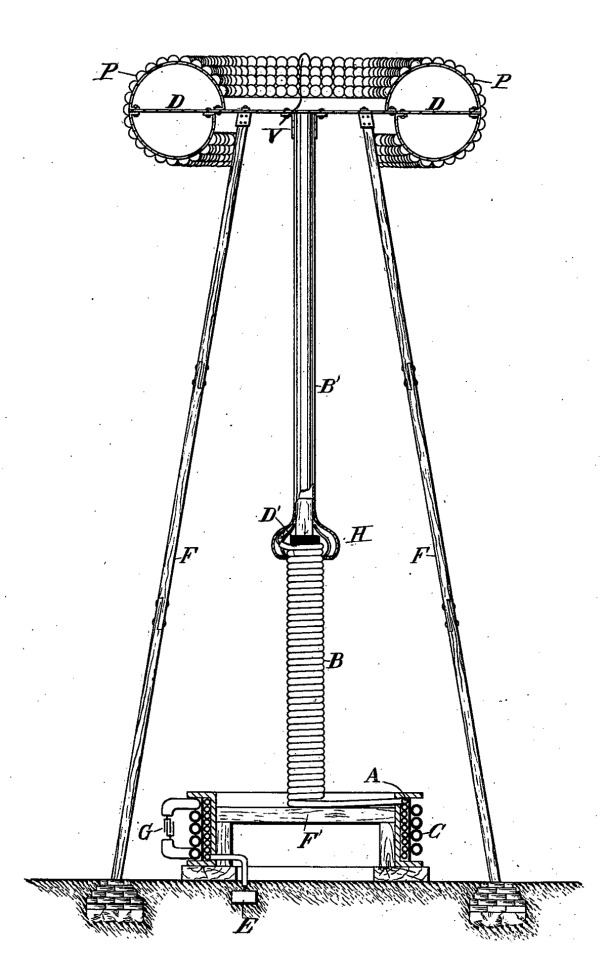
Another version of his coils was his Helical coil. A helical coil is a coil wound in the shape of a helix or spiral. The helical coil configuration is characterized by the wires being wound around a cylindrical form in a continuous spiral pattern. Tesla utilized helical coils throughout the late 1890s and in his Colorado Springs Experiments. The coils were used in his wireless transmission experiments, and he employed helical resonators to investigate the behavior of electromagnetic waves. The helical shape offers specific electrical properties and can influence the resonance and performance of the coil in certain applications.
Finally, the Tesla coil would eventually evolve into his Magnifying Transmitter. Tesla designed it as part of his wireless power transmission experiments. The magnifying transmitter was intended to efficiently transmit electrical energy over long distances without the need for wires. The system involved a large coil, often called the magnifying transmitter coil, which could produce high-frequency, high-voltage electrical currents. Tesla believed that this technology could revolutionize global communication and provide a means for delivering electrical power wirelessly by using the earth itself as a conductor.
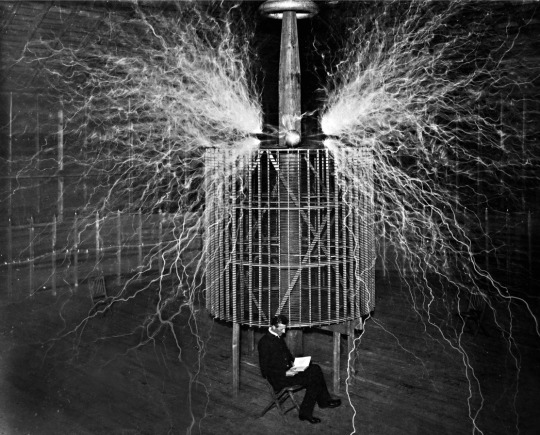
The magnifying transmitter would become his Wardenclyffe Tower. Unfortunately, Tesla ended up lacking the investments and funds to finish his work in its entirety. Some say he failed because his idea didn’t work, but that’s not true at all because his Colorado experiments proved that they did. In his head, the transmission of energy was a matter of engineering. If he had a machine that could send energy 20 miles, then he could build a machine that could send energy a thousand miles. As long as he understands the motive power, he could build a machine that will do all that he requires of it. He simply underestimated the cost of his system. His failures to finish his work would leave him with the public persona as being the mad scientist who had unrealistic ideas for the future.
Ultimately, Tesla would not realize his dream of providing humankind with cheap, unlimited energy in his lifetime; however, his legacy forever lives on through the incredibly impactful experiments, and the evolution of the Tesla Coil.
“Technical invention is akin to architecture and the experts must in time come to the same conclusions I have reached long ago. Sooner or later my power system will have to be adopted in its entirety and so far as I am concerned it is as good as done. If I were ever assailed by doubt of ultimate success I would dismiss it by remembering the words of that great philosopher, Lord Kelvin, who after witnessing some of my experiments said to me with tears in his eyes: ‘I am sure you will do it.’”--Nikola Tesla
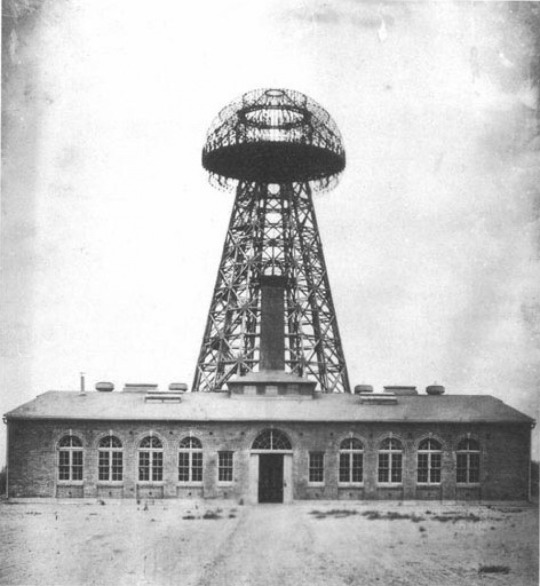
#nikola tesla#science#history#electricity#invention#wireless#energy#power#Tesla coil#quotes#ahead of his time#ahead of our time
240 notes
·
View notes